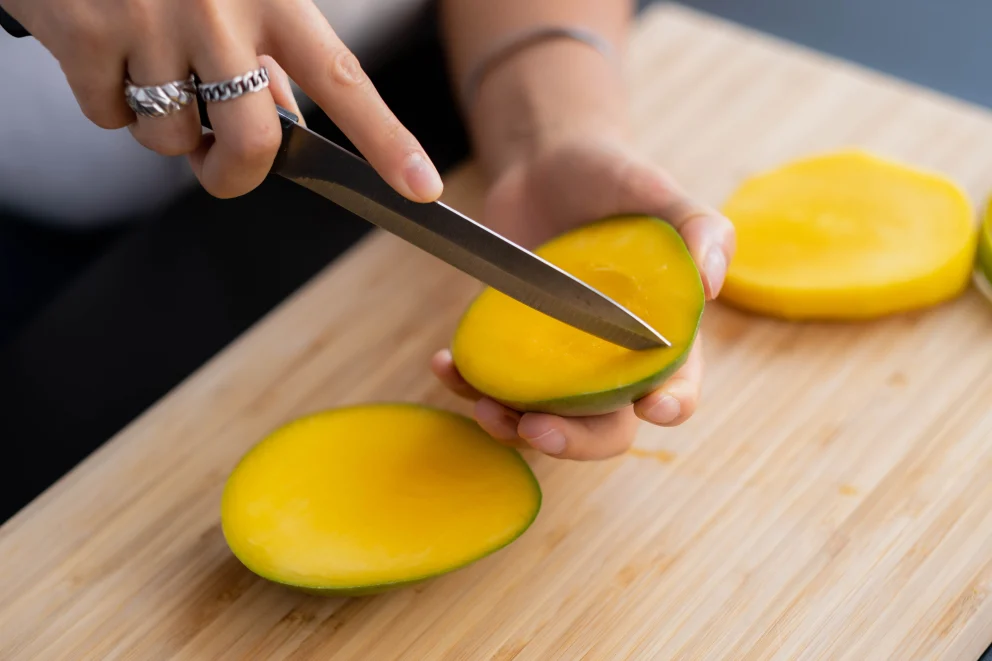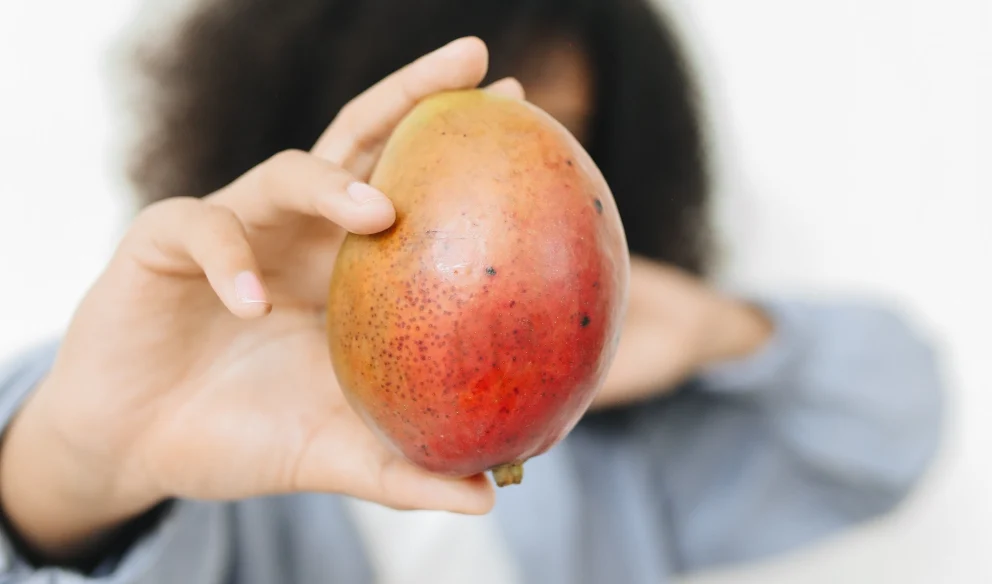What is Myrcene? Understanding Beta-Myrcene Effects & Benefits

Photo by Ron Lach
Part of the widespread popularity of medical marijuana is the countless beneficial compounds found in cannabis. Everyone is familiar with the more notable compounds like the cannabinoids THC and CBD. While these more well known cannabinoids can encourage people to buy cannabis, there are quite a few chemicals that continue to showcase potential health benefits like the terpene beta-myrcene.
Terpenes are phytochemicals, i.e. chemicals made by plants, that have certain positive effects in humans. Often known for their antioxidant properties, these chemicals help give cannabis strains their unique taste and smell profile. Part of why all weed strains smell differently is their distinct blend of terpenes.
Terpenes are often characterized as antioxidants for their ability to tackle free radicals. One major cause of aging and disease is oxidative stress. Basically, chemicals known as free radicals exist in everything from air pollution to fried foods to alcohol.
Free radicals contain molecules that are hungry for an extra electron. They try to find equilibrium by absorbing electrons from human cells. This puts cells under oxidative stress which causes aging and can increase your chances of developing diseases. Antioxidants help by connecting with free radicals to balance them out chemically. This helps free radicals avoid attacking human cells.
Different terpenes also have even more health benefits. Currently, we focus on how all of the chemicals in cannabis work together to form what’s known as the entourage effect. This is how the sum of all of these chemicals combine to form one collective effect vs. how each chemical affects the body differently.
The most prominent terpene is cannabis is myrcene a.k.a. Beta-myrcene. In this post, we’ll showcase the many health benefits of myrcene, what it does both in cannabis and to the human body. Not to mention, how myrcene is used in everything from beer making to food additives.
Apply for a Medical Marijuana Card Online Today
Join over 100,000 patients who have chosen Green Health Docs as their medical cannabis doctors. We have a 99% approval rate and offer a 100% money back guarantee!
What Is Beta Myrcene?
Beta-myrcene a.k.a. Myrcene is a monoterpene like other common terpenes linalool and limonene. Monoterpenes, given their simple chemical make up, are super common in plants. Myrcene boasts 20-50% of all terpene content in cannabis.
Myrcene’s unique scent and flavor profile has made it popular and it’s renowned for its sedative properties and other health benefits. Myrcene is often the more common terpene in indica strains.
What Does Myrcene Smell Like?
Part of what really drives myrcene’s popularity is its scent. Myrcene’s scent is often described as spicy, earthy or musky with a hint of fruitiness. It’s found in both cardamom and cloves and shares the common scent of those herbs. It’s also found in hops and some describe it to have a hoppy-like scent.
Myrcene Terpene Flavor
Myrcene is reported to have a sweet, yet spicy scent and taste while also having fruity notes. People will often comment that it tastes like mango which is one of the most notable plants to contain high amounts of myrcene.
Myrcene is also found in hops and can give beers a sweet yet peppery taste during the fermentation process.

Photo by Any Lane
Foods With Myrcene
Beta-myrcene, being so simple in its chemical makeup, can be found in many popular plants. Some common plant foods that naturally contain the terpene myrcene are:
- Mango
- Hops
- Guava
- Cloves
- Cinnamon
- Thyme
- Black Pepper
- Parsley
- Bay leaves
- Basil
- Oregano
- Lemongrass
- Cardamom
- Sweet basil
Additional common plant and plant products that contain myrcene include:
- Houttuynia
- Myrcia
- Ylang-ylang essential oil
- Juniper essential oils
- West Indian bay tree
Myrcene Terpene Benefits
One of the most common benefits of myrcene is how it can help you relax and sleep. People often turn to indicas to help deal with insomnia, anxiety, and pain. Myrcene is often what is responsible for couch lock. Couch lock is the wave of laziness cannabis users characterize.
This is caused by both the sedative and pain relieving aspects of myrcene. A study published in the British Journal of Pharmacology found myrcene to be an effective analgesic, sedative, muscle relaxant, and pain reliever. It’s no surprise that it might make you so relaxed to not want to move. Myrcene also has anti-inflammatory properties and helps alleviate pain which is another reason patients often turn to indica strains.
A scientific study found that myrcene, combined with limonene and beta-caryophyllene, had strong anti-inflammatory, anti-catabolic and pro-anabolic qualities that helped slow down cartilage destruction and was a potential treatment for osteoarthritis.
A Korean study found that myrcene can help discourage human breast cancer cells from metastasizing or spreading through the body. Myrcene can even potentially prevent cancer from advancing.
A study published in the Journal of Food and Chemical Toxicology found that linalool and myrcene combined can help protect DNA against damage caused by toxins like t-butyl-hydroperoxide.
A 2007 study out of Jordan found that myrcene, in combination with another terpene known as thujone, may be an effective treatment for symptoms associated with diabetes. Myrcia sphaerocarpa, a medicinal shrub from Brazil, is very high in myrcene. It’s been used for over 2000 years to treat diabetes, diarrhea, dysentery, and hypertension.
As if that is all not enough possible benefits from myrcene one study found that it may even have anti-aging properties. Apparently, the study found that its antioxidant properties can help mitigate the negative effects of UV radiation with regards to increasing the symptoms of aging.
Myrcene Terpene Effects
Myrcene given how it helps decrease inflammation can help prevent disease. It’s not just anti-inflammatory, it’s both pain relieving and antibacterial. These combined forces can help restrict diseases from spreading. For example, beta-myrcene was found to be cardioprotective.
Myrcene is such an effective pain reliever as it interacts with the nerve receptor that mediates pain perception known as the transient receptor potential cation channel subfamily V member 1 (TRPV-1) receptor. This increases myrcene’s ability to offer pain relief.
What Does Myrcene Do?
The main things that myrcene does is to help your body relax, reduce pain, and decrease inflammation. These three major factors help unite to both drive the popularity of myrcene heavy strains and also essentially affects your body in different ways.
As a sedative, myrcene can help reduce anxiety and aid in sleep. As an anti-inflammatory it helps reduce the spread of disease and can help with your healing. As a pain reliever it helps your body reduce the amount of pain you feel.
In addition, myrcene, as mentioned earlier, contributes to the entourage effect. Basically, it interacts with the many compounds in cannabis. It tends to contribute to fast acting highs and as many myrcene-heavy strains are known to kick in quickly. There are some claims that myrcene has an effect on the permeability of cell membranes that can help increase transport of cannabinoids through the body and to the brain. However, there is not sufficient study to validate that claim.

Photo by Polina Tankilevitch
High Myrcene Strains
Myrcene is often attributed to indicas. In the indica vs. sativa comparison, what we usually attribute to indica strains as a plant breed i.e. couch lock and other sedative properties is actually often caused by a strain’s high myrcene content.
Given the selective breeding process in the cannabis world, there are very few true indicas and sativas. Most strains are hybrids but what we define as indicas at dispensaries is often strains that contain high amounts of myrcene.
Some high myrcene strains include:
- 9LB Hammer
- ACDC
- Afgan Moon
- Aliens on Moonshine
- Blue Dream
- Granddaddy Purple
- Grape Ape
- Harlequin
- Jillybean
- Lemongrass
- Mandarin Dream
- OG Kush
- Purple Urkle
- Strawberry Switchblade
- Tangie
- TruBerry OG
- White Widow
Is Myrcene Safe?
Myrcene, the natural terpene, is ultimately safe, especially as it is found in nature. However, like with many popular fruit flavors and plant compounds synthetic versions of terpenes have been used as food additives.
In 2015, beta-myrcene was added to California’s Prop 65 list of chemicals known to cause cancer or reproductive harm. The state of California has stringent laws about sharing how compounds can affect the human body.
Synthetic myrcene was found to cause cancer in lab rats. While the US FDA did find that it’s not necessarily as likely to be cancerous to humans it was still removed from the synthetic flavoring from its list of substances able to be used in food production.
Final Thoughts
Myrcene is not just one of the most prominent terpenes in cannabis but one of the many highly beneficial compounds in cannabis. There are hundreds of compounds in cannabis that all interact with the human body including our endocannabinoid system.
If you’d like to see for yourself how helpful cannabis compounds like the terpene myrcene can help your health and wellbeing consider getting your medical marijuana card. With this simple process, you’ll not only get access to cannabis flower and products but also cannabis products that have been thoroughly tested. This will help you understand which chemicals and strains work best for you.
Medical marijuana is a way you can familiarize yourself with compounds like myrcene and see for yourself how much they can help you in treating your conditions and alleviating symptoms.
 This article has been reviewed by Dr. Anand Dugar, an anesthesiologist, pain medicine physician and the founder of Green Health Docs. Graduating from medical school in 2004 and residency in 2008, Dr. Dugar has been a licensed physician for almost 20 years and has been leading the push for medical cannabis nationwide.
This article has been reviewed by Dr. Anand Dugar, an anesthesiologist, pain medicine physician and the founder of Green Health Docs. Graduating from medical school in 2004 and residency in 2008, Dr. Dugar has been a licensed physician for almost 20 years and has been leading the push for medical cannabis nationwide.
